Abstract
In a prospective randomised study, 289 children admitted consecutively to hospital with their first febrile seizure were allocated, by date of admission, to short term diazepam prophylaxis (n = 152) or to no prophylaxis (n = 137) and followed for 18 months. In untreated children, five major risk factors for recurrent febrile convulsions were identified: age 15 months or less at the time of the first febrile seizure, epilepsy in first degree relatives, febrile convulsions in first degree relatives, a first complex febrile seizure, and day nursery care. The 18 month recurrence rate was 80 to 100% if three to five risk factors were present, 50% if two factors were identified, 25% where one factor was found, and 12% if there were no predictors. During prophylaxis the recurrence rate was uniformly low (mean 12%) in all risk groups. In high (three or more factors) and intermediate (two factors) risk children prophylaxis provided effective seizure control and reduced the recurrence rate from 80%, or more, to 12% and 50% to 12%, respectively. In children with one risk factor 50% of all recurrences were prevented (25% to 12%). Prophylaxis was ineffective in very low risk children (12% to 12%).
Full text
PDF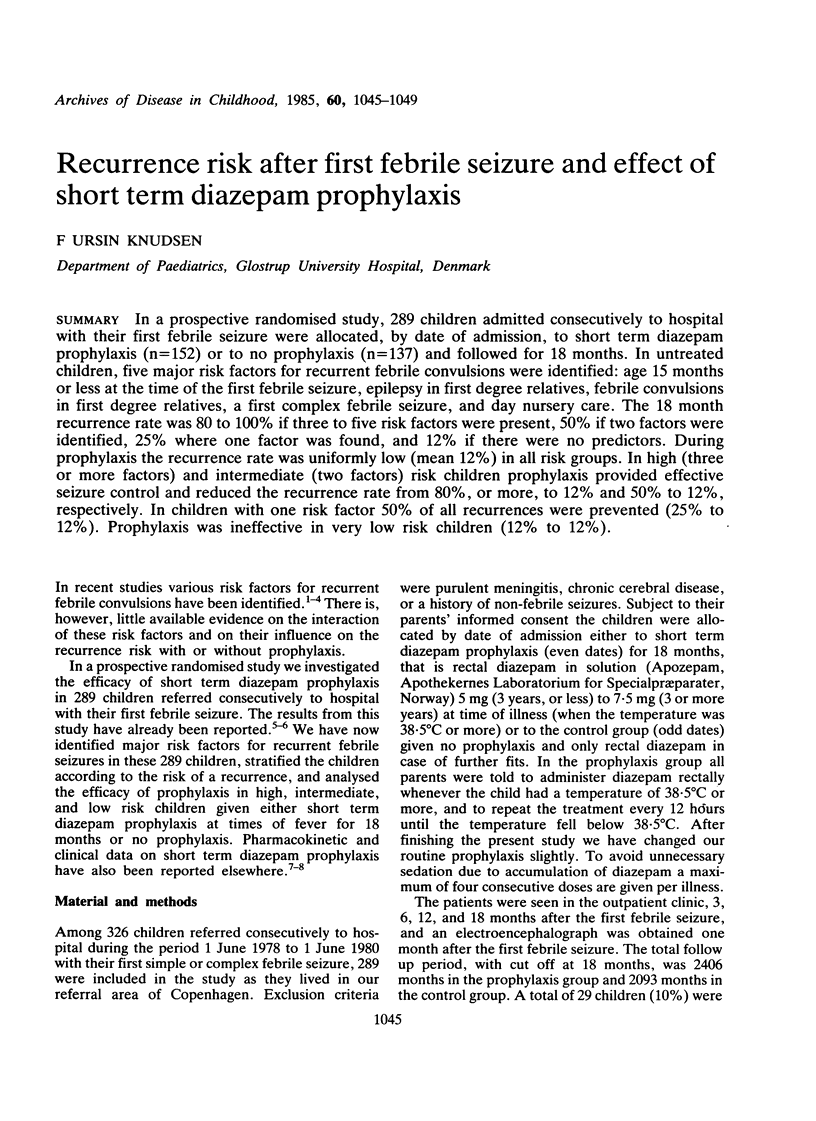
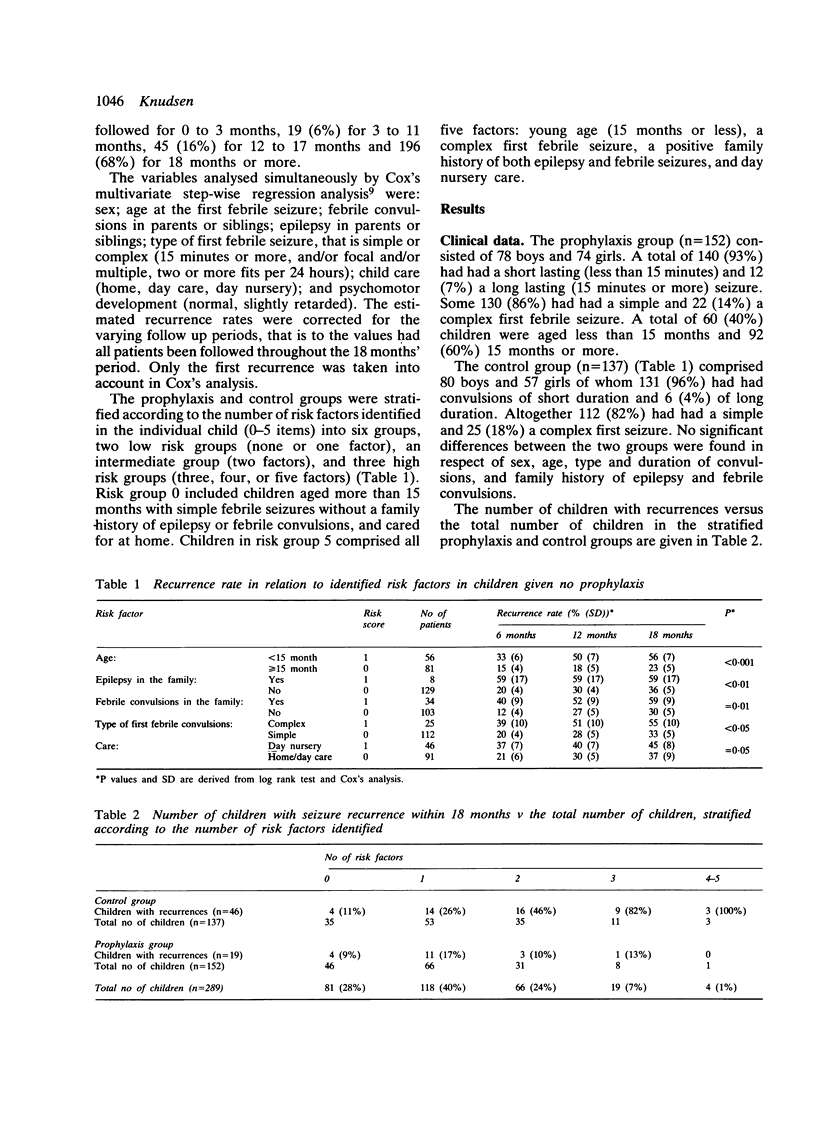
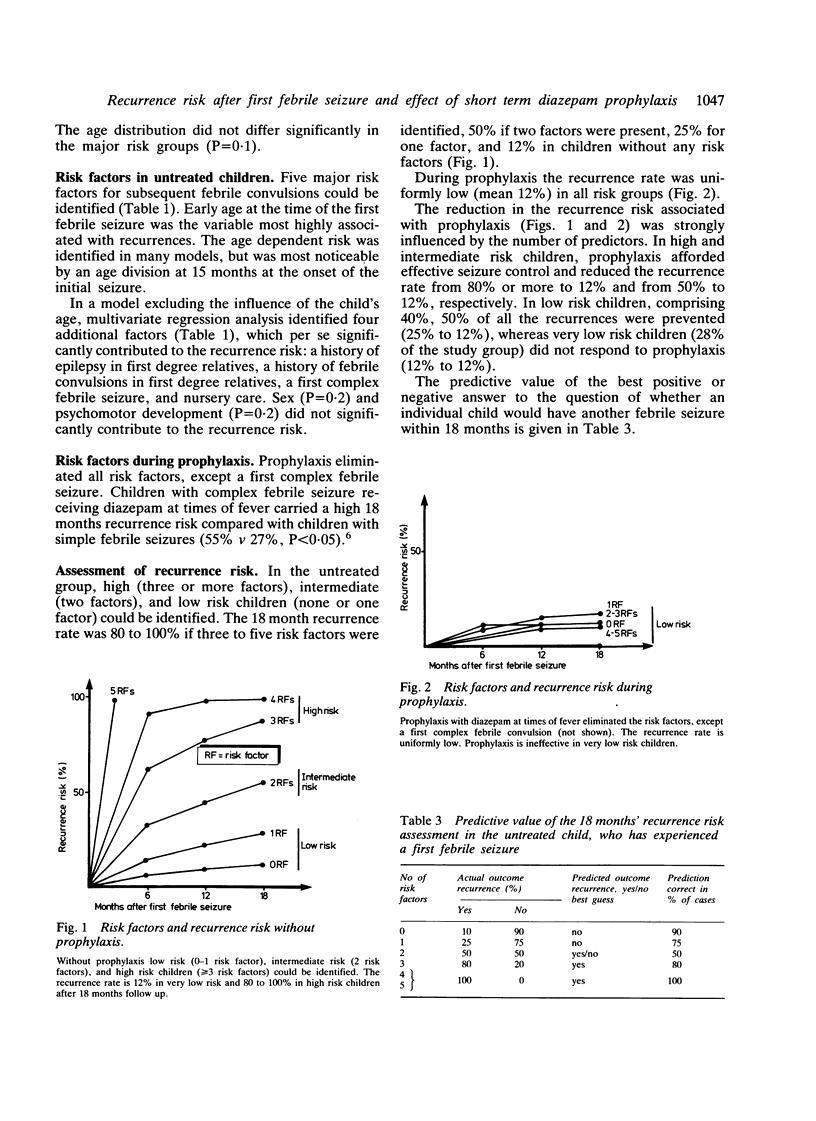
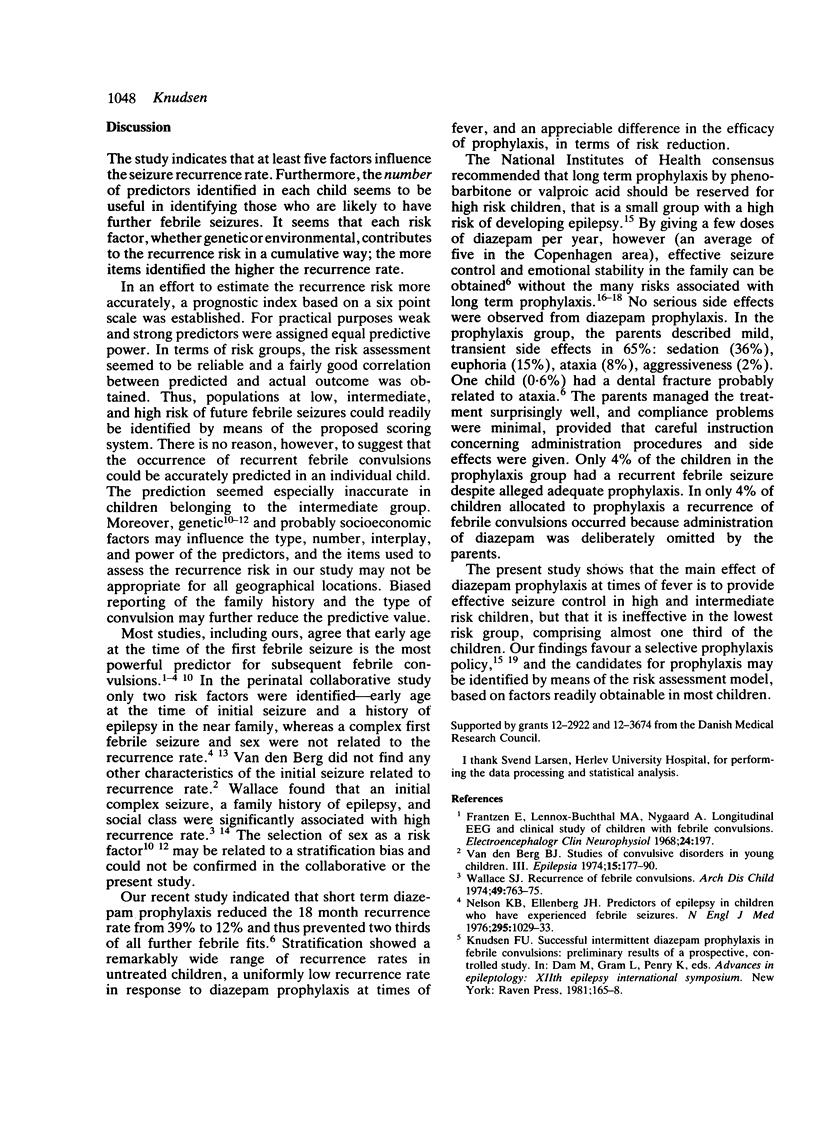
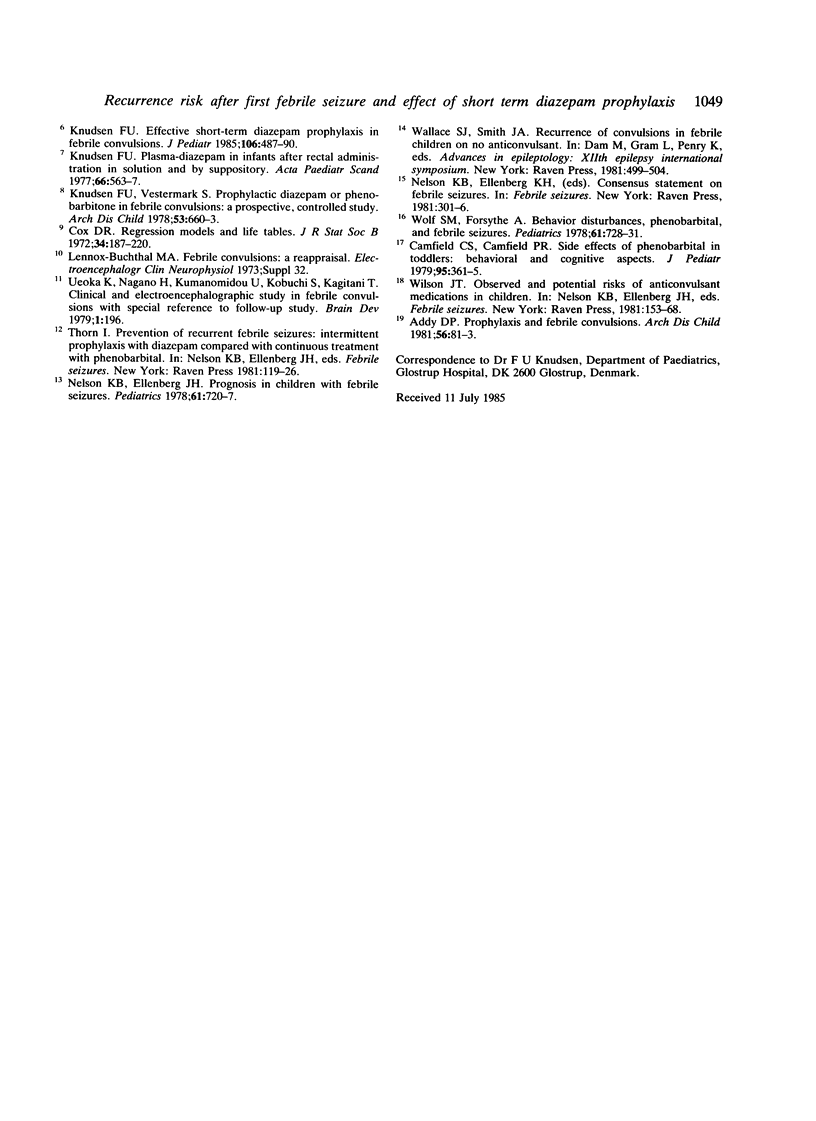
Selected References
These references are in PubMed. This may not be the complete list of references from this article.
- Addy D. P. Prophylaxis and febrile convulsions. Arch Dis Child. 1981 Feb;56(2):81–83. doi: 10.1136/adc.56.2.81. [DOI] [PMC free article] [PubMed] [Google Scholar]
- Camfield C. S., Chaplin S., Doyle A. B., Shapiro S. H., Cummings C., Camfield P. R. Side effects of phenobarbital in toddlers; behavioral and cognitive aspects. J Pediatr. 1979 Sep;95(3):361–365. doi: 10.1016/s0022-3476(79)80507-7. [DOI] [PubMed] [Google Scholar]
- Frantzen E., Lennox-Buchthal M., Nygaard A. Longitudinal EEG and clinical study of children with febrile convulsions. Electroencephalogr Clin Neurophysiol. 1968 Mar;24(3):197–212. doi: 10.1016/0013-4694(68)90001-1. [DOI] [PubMed] [Google Scholar]
- Knudsen F. U. Effective short-term diazepam prophylaxis in febrile convulsions. J Pediatr. 1985 Mar;106(3):487–490. doi: 10.1016/s0022-3476(85)80688-0. [DOI] [PubMed] [Google Scholar]
- Knudsen F. U. Plasma-diazepam in infants after rectal administration in solution and by suppository. Acta Paediatr Scand. 1977 Sep;66(5):563–567. doi: 10.1111/j.1651-2227.1977.tb07947.x. [DOI] [PubMed] [Google Scholar]
- Knudsen F. U., Vestermark S. Prophylactic diazepam or phenobarbitone in febrile convulsions: a prospective, controlled study. Arch Dis Child. 1978 Aug;53(8):660–663. doi: 10.1136/adc.53.8.660. [DOI] [PMC free article] [PubMed] [Google Scholar]
- Nelson K. B., Ellenberg J. H. Predictors of epilepsy in children who have experienced febrile seizures. N Engl J Med. 1976 Nov 4;295(19):1029–1033. doi: 10.1056/NEJM197611042951901. [DOI] [PubMed] [Google Scholar]
- Nelson K. B., Ellenberg J. H. Prognosis in children with febrile seizures. Pediatrics. 1978 May;61(5):720–727. [PubMed] [Google Scholar]
- Van den Berg B. J. Studies on convulsive disorders in young children. 3. Recurrence of febrile convulsions. Epilepsia. 1974 Jun;15(2):177–190. doi: 10.1111/j.1528-1157.1974.tb04940.x. [DOI] [PubMed] [Google Scholar]
- Wallace S. J. Recurrence of febrile convulsions. Arch Dis Child. 1974 Oct;49(10):763–765. doi: 10.1136/adc.49.10.763. [DOI] [PMC free article] [PubMed] [Google Scholar]
- Wolf S. M., Forsythe A. Behavior disturbance, phenobarbital, and febrile seizures. Pediatrics. 1978 May;61(5):728–731. [PubMed] [Google Scholar]


